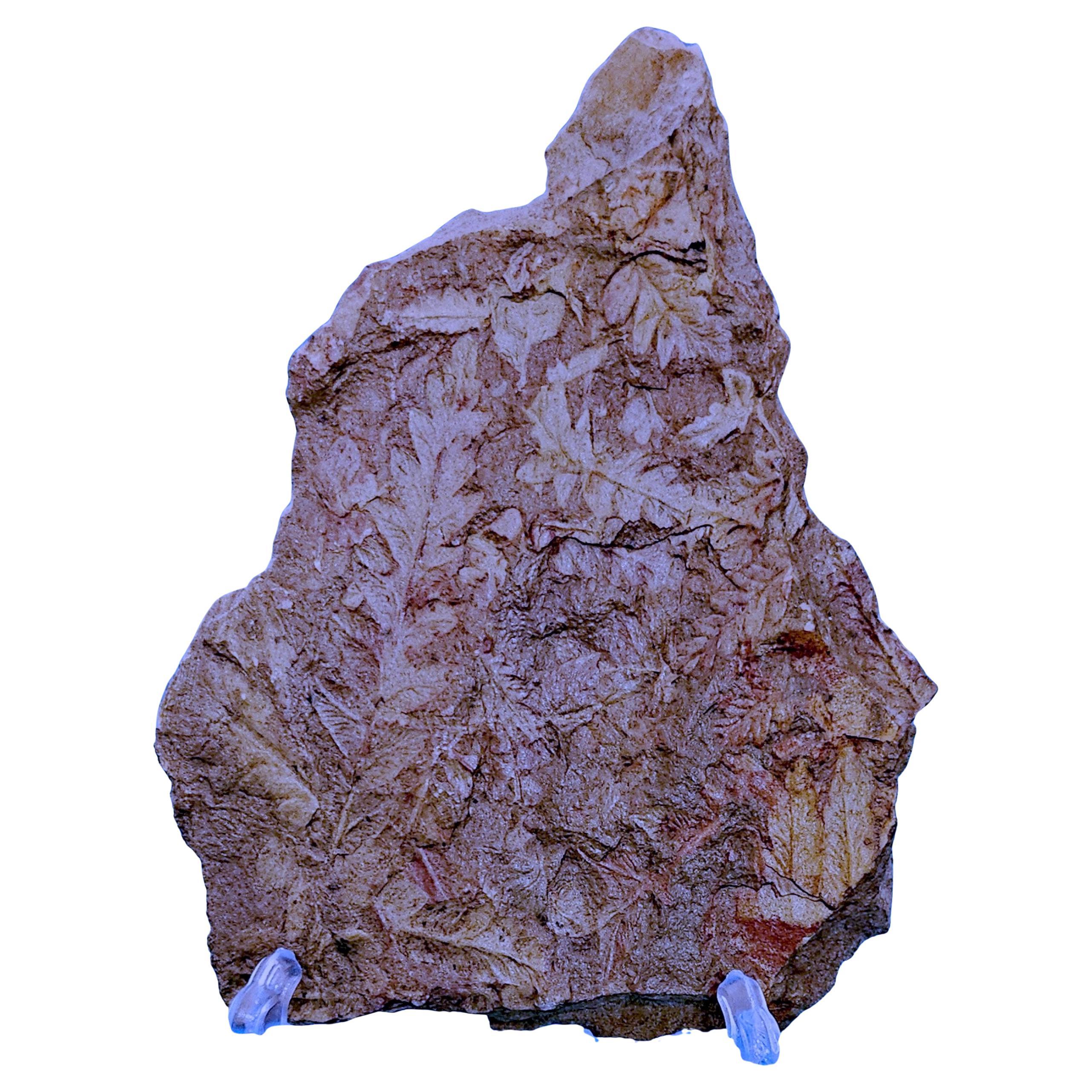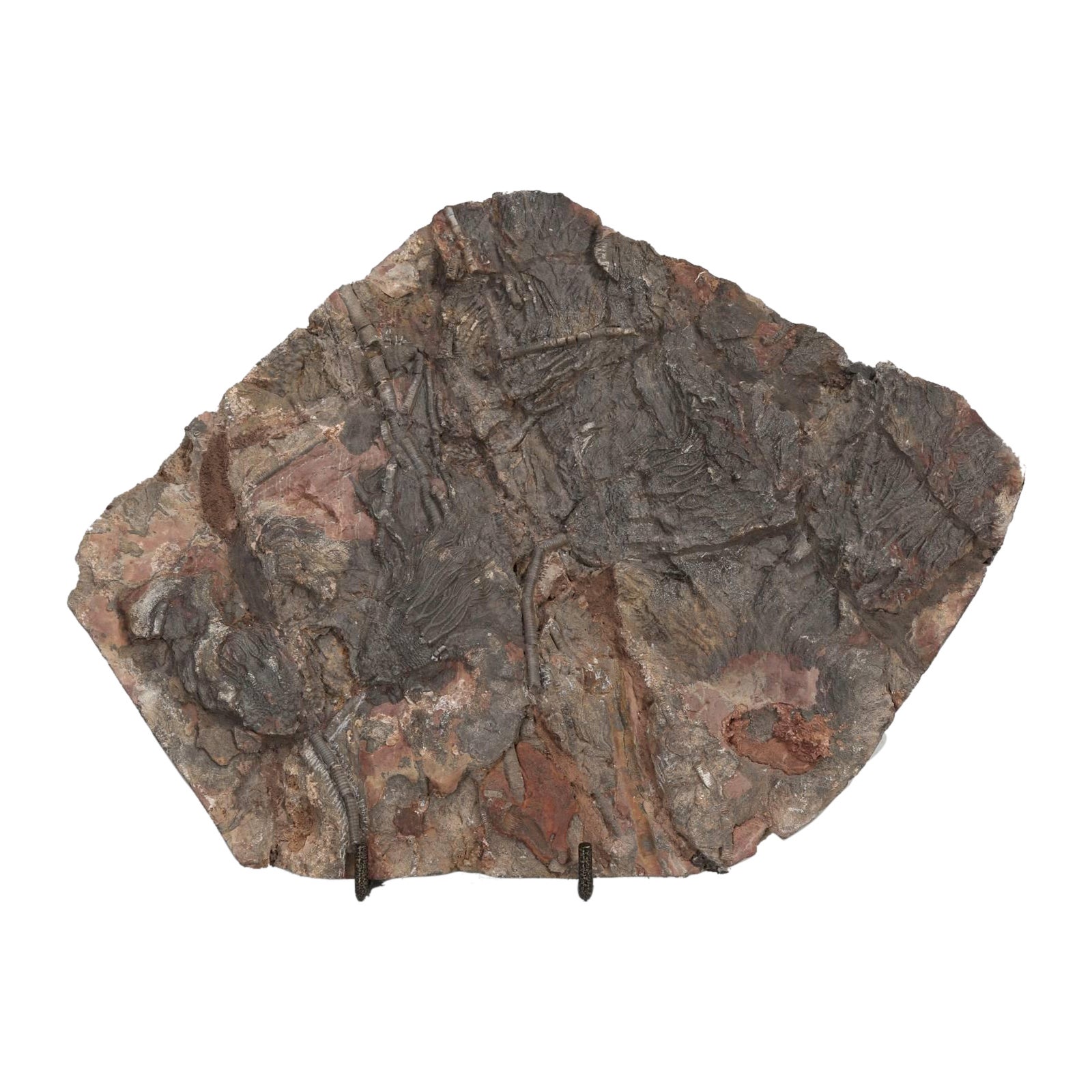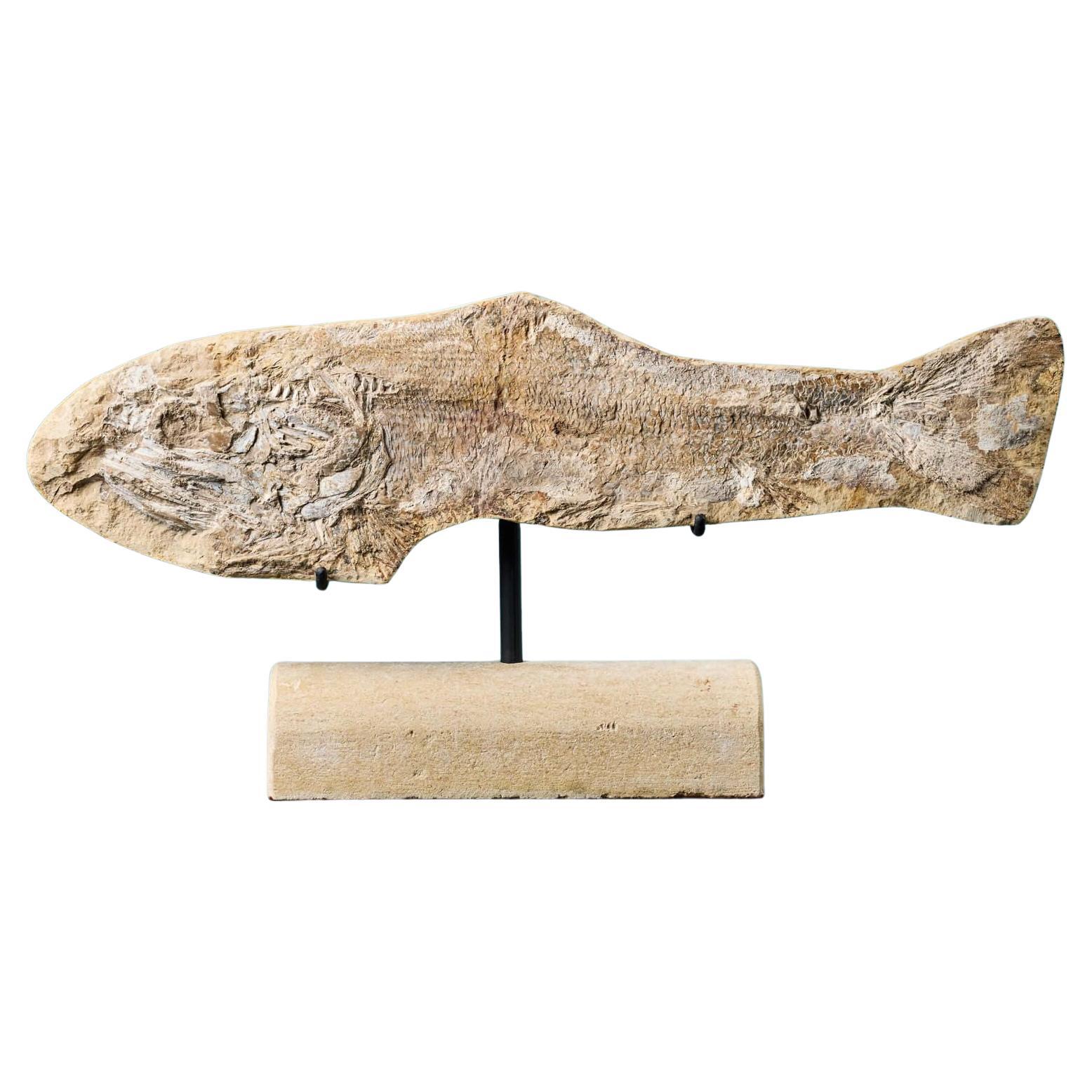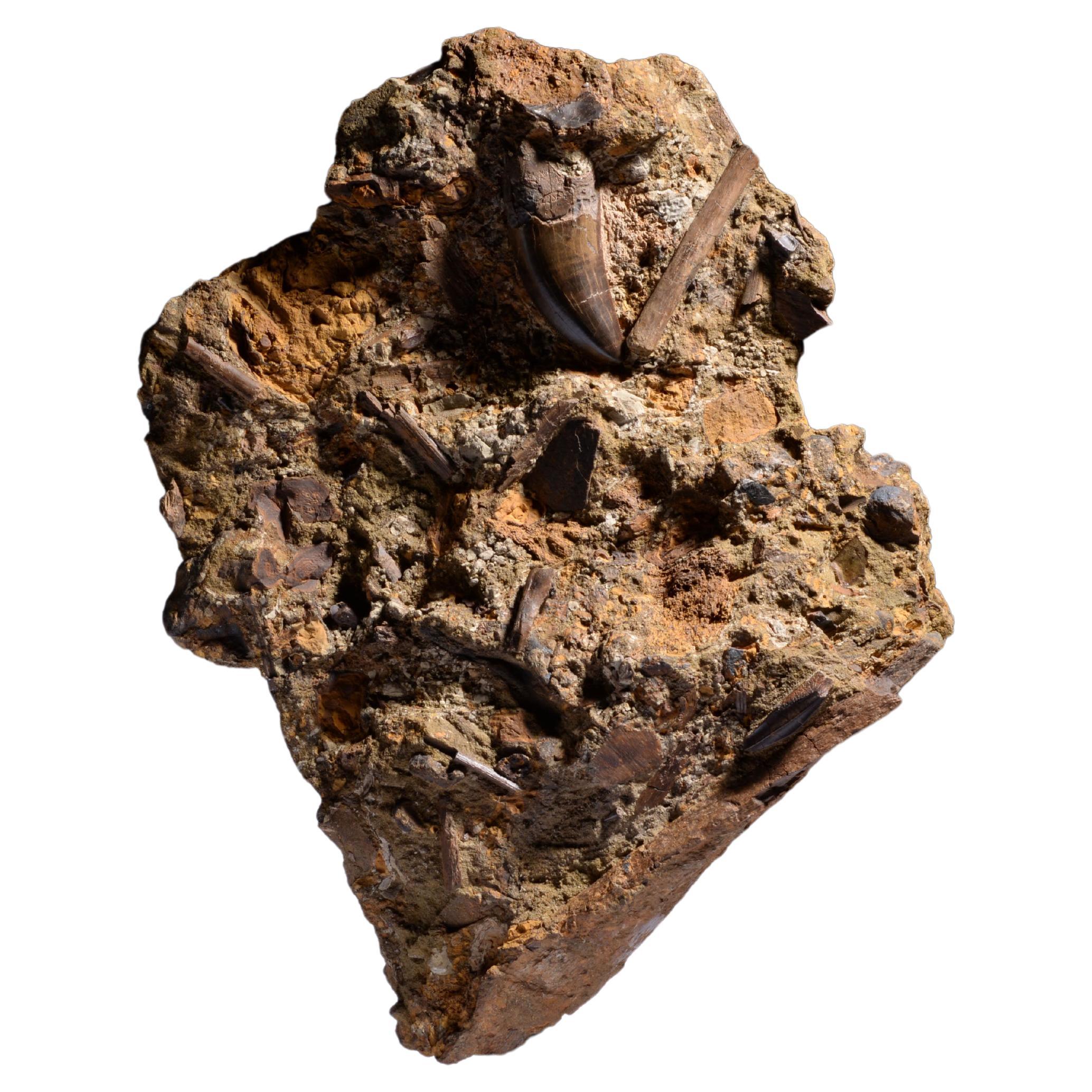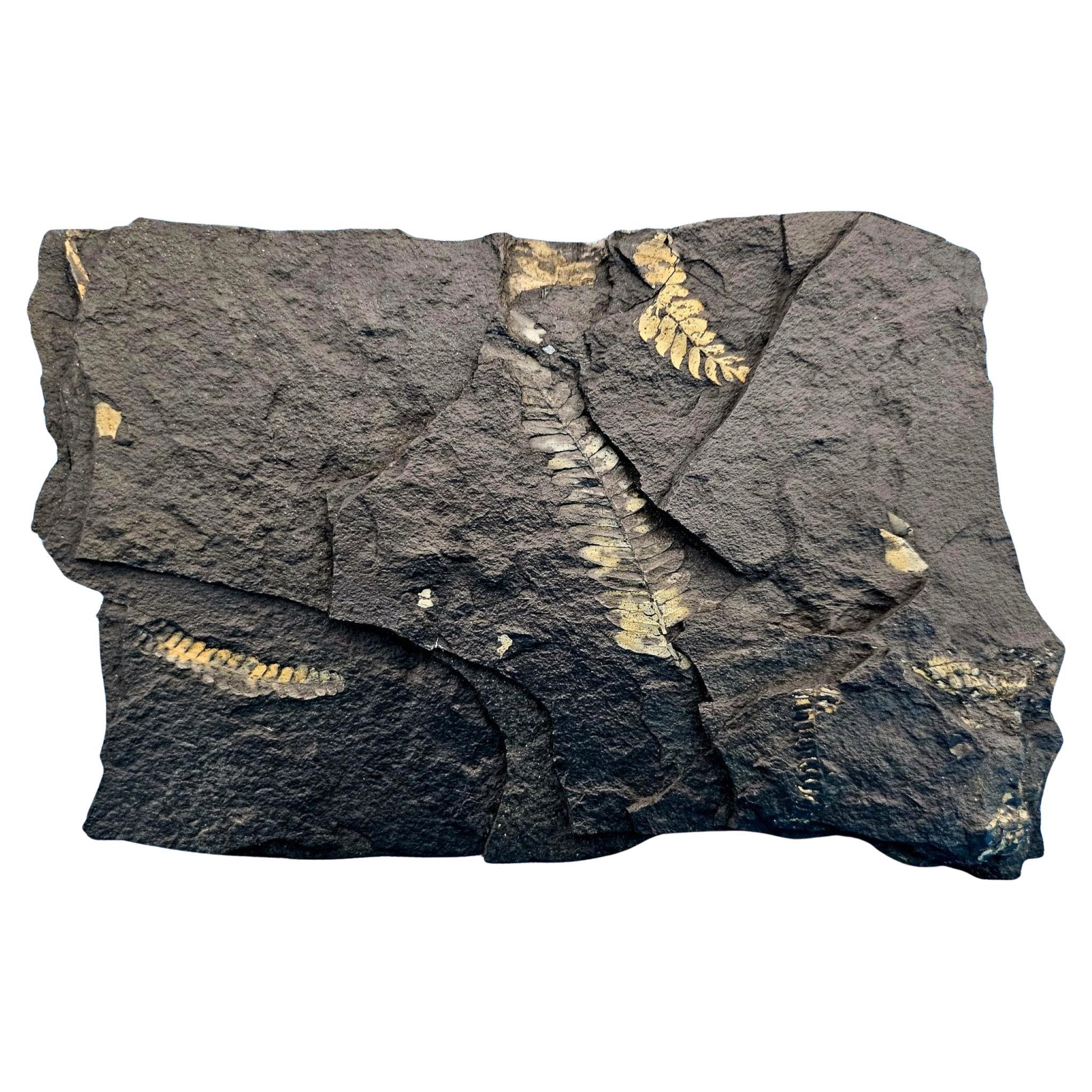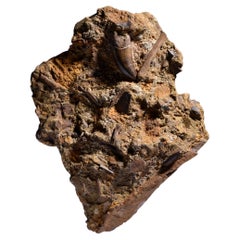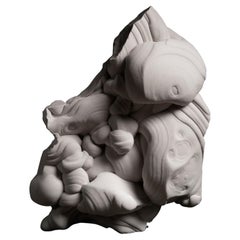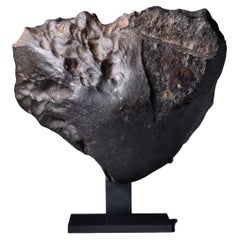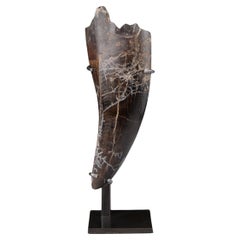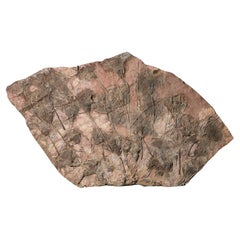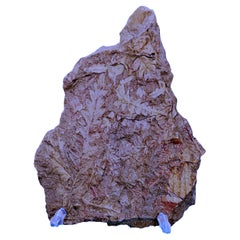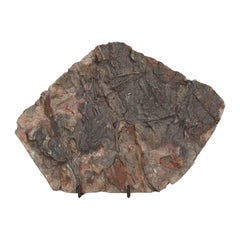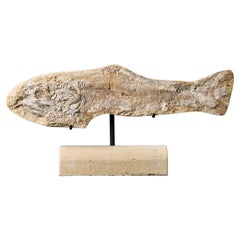Items Similar to Fossilised Dinosaur Skin
Video Loading
Want more images or videos?
Request additional images or videos from the seller
1 of 8
Fossilised Dinosaur Skin
$20,000
£15,153.79
€17,387.78
CA$28,143.23
A$30,937.15
CHF 16,259.15
MX$375,689.68
NOK 202,828.77
SEK 192,166
DKK 129,769.38
About the Item
Fossilised Skin of a Brachylophosaurus
Approx. 80 Million y/o
An exceptional specimen of fossilised dinosaur skin, preserving the hexagonal scales of a Brachylophosaurus (“short-crested lizard”). This unusual and fascinating duck-billed dinosaur is known for the distinctive flat, bony crest which sometimes covered its entire skull and gave it its name, and its mysteriously long arms. A herbivore that could grow up to 11 metres (36 feet), Brachylophosaurus roamed the Earth during the Late Cretaceous, about 81 to 76.7 million years ago.
Virtually all dinosaur remains that have survived until the present day are bones or fragments of bones, making samples of soft tissue such as this not only exceedingly rare, but invaluable to the scientific community, providing us with unique insights into how these strange and magnificent creatures might once have looked. Hadrosaurs, a genus of large, duck-billed, herbivorous dinosaurs which includes Brachylophosaurus, appear to have left fossilised skin remains at a much greater frequency than other species - this reasons for this remain obscure to archeologists, but may be because of their hides, armour-plated with thick, strong scales to protect from predators, were more resistant to decay than those of other dinosaurs.
This specimen, remarkably well preserved, was found in the Judith River Formation, a Late Cretaceous site in North Montana, known for yielding the first dinosaur remains discovered in North America, as well as for the impressive quality, and wide diversity, of the fossils that have been found there since.
Height on stand: 19 cm (7.48 inches)
Provenance:
Discovered in late 2012 on a private land in northern Montana.
- Dimensions:Height: 7.49 in (19 cm)Width: 5.91 in (15 cm)Depth: 2.56 in (6.5 cm)
- Materials and Techniques:
- Place of Origin:
- Period:
- Date of Manufacture:Approx. 80 Million y/o
- Condition:
- Seller Location:London, GB
- Reference Number:Seller: 427641stDibs: LU1052231715372
About the Seller
5.0
Recognized Seller
These prestigious sellers are industry leaders and represent the highest echelon for item quality and design.
Established in 2007
1stDibs seller since 2014
103 sales on 1stDibs
Typical response time: 6 hours
Associations
LAPADA - The Association of Arts & Antiques DealersInternational Confederation of Art and Antique Dealers' AssociationsThe British Antique Dealers' Association
- ShippingRetrieving quote...Shipping from: London, United Kingdom
- Return Policy
Authenticity Guarantee
In the unlikely event there’s an issue with an item’s authenticity, contact us within 1 year for a full refund. DetailsMoney-Back Guarantee
If your item is not as described, is damaged in transit, or does not arrive, contact us within 7 days for a full refund. Details24-Hour Cancellation
You have a 24-hour grace period in which to reconsider your purchase, with no questions asked.Vetted Professional Sellers
Our world-class sellers must adhere to strict standards for service and quality, maintaining the integrity of our listings.Price-Match Guarantee
If you find that a seller listed the same item for a lower price elsewhere, we’ll match it.Trusted Global Delivery
Our best-in-class carrier network provides specialized shipping options worldwide, including custom delivery.More From This Seller
View AllTyrannosaurus Rex Tooth in Fossil Matrix
Located in London, GB
Tyrannosaurus Rex Tooth in Fossil Matrix.
Late Cretaceous, circa 65 Million years before present.
Lance Formation, Marchant Ranch Quarry, Niobrara County, Wy...
Category
Antique 15th Century and Earlier Natural Specimens
Materials
Other
Natural Gogotte Formation
Located in London, GB
A magnificent example of a gogotte formation composed of thick swirls and folds of sparkling sandstone. Discovered in the Oligocene sand dunes of Fontainebleau, France, formed circa 30 million years before present or later.
The incredible, almost otherworldly appearance of gogottes may easily be mistaken for the work of a most talented artist. In fact, these sandstone sculptures are entirely natural in origin. They have been found in multiple locations but those from Fontainebleau, such as the present example, are the most remarkable. Thirty-five million years ago, a sea covered what is now the forest of Fontainebleau, and dunes of exceptionally fine and homogenous sand formed. As silica-rich water filtered through this sand, it turned into stone. The flow of water finely modelled the sandstone into the aesthetic concretions we now know as gogottes. These are rare and are only found sporadically several metres deep into the ground. They owe their sparkling white appearance to the extreme and unmatched purity of the Fontainebleau sand, sometimes reaching a composition of 99.9% silica. Each of them is unique – a masterpiece slowly fashioned by the hands of Nature.
The intriguing name of “gogotte” was coined by French geologist Claude Guillemin (1923- 1994), who was inspired by the children’s book series Babar the Elephant. In one of the books, a group of monsters called Gogottes are shown hiding behind rocks. These rocks reminded Guillemin of the sandstone concretions...
Category
Antique 15th Century and Earlier Natural Specimens
Materials
Other
Oriented Stone Meteorite
Located in London, GB
Oriented Stone Meteorite
Chondrite
5.00 kg
Detached from its parent body by a mighty impact, this large, oriented Meteorite travelled over a hu...
Category
Antique 15th Century and Earlier North African Natural Specimens
Materials
Stone
Tyrannosaurus Rex Tooth Fossil
Located in London, GB
FOSSILISED TYRANNOSAURUS REX TOOTH
Circa 67 million years ago
H. 12.5 cm x W. 4.2 cm
PROVENANCE
Found in Butte County, South Dakota, USA, Summ...
Category
Antique 15th Century and Earlier American Natural Specimens
Materials
Other
Monolithic Stone Meteorite
Located in London, GB
Unclassified Meteorite
Stone
Height: 36.83 cm
42.5 kg
A dramatic extraterrestrial sculpture, of monolithic form, covered in a thick grey-brown fusion crust and with areas of sandy deposits from untold years spent on the desert floor. Formed in the asteroid belt between Mars and Jupiter during the formation of our solar system, some 4.55 billion years ago, this large stone would have been separated from its parent body by an enormous impact before journeying through interplanetary space and eventually reaching Earth.
Upon atmospheric entry it would have reached cosmic velocity, heating the surrounding air to 1700°C and producing a large ball of fire. The heat was sufficient to melt the outer surface of the stone, exposing a new surface which in turn also melted away, losing as much as 95% of its initial mass before reaching the ground. The last molten layer to form as it collided with the Earth covered the stone in a layer of fusion crust, evidence of the incredible impact force delivered by this extraordinary specimen.
“This unclassified stone meteorite was found in Northwest Africa. It has a relatively smooth, dark brown, slightly weathered fusion crust; some small melt veins are visible on the surface. Due to the near-absence of terrestrial rocks in this region of the Sahara, meteorite hunting in this area has yielded many notable discoveries.”
Dr Alan E. Rubin, PhD Department of Earth, Planetary, and Space Sciences...
Category
Antique 15th Century and Earlier North African Natural Specimens
Materials
Stone
Petrified Incense Cedar Wood Fossil
Located in London, GB
This spectacular cross section of petrified cedar wood comes from Saddle Mountain, Washington. It is remarkably large with a wonderful and highly aesthetic shape, exhibiting vibrant ...
Category
Antique 15th Century and Earlier Natural Specimens
Materials
Petrified Wood
You May Also Like
Monumental Plate-like Fossilised Crinoid
Located in Wormelow, Herefordshire
A monumental plate-like fossilised crinoid salvaged from a property housing an ex private British collection.
Thought to date to millions of years ago during the Devonian period, th...
Category
Antique 15th Century and Earlier Moroccan Natural Specimens
Materials
Natural Fiber
Mariopteris Species Natural Tree Fern Fossil Specimen Over 300 Million Years Old
Located in Warrenton, OR
Mariopteris Species Natural Tree Fern Fossil Specimen Over 300 Million Years Old
Discovered in Pennsylvania. Hues occur naturally over time through the mineralization process. The hu...
Category
Antique 15th Century and Earlier American Organic Modern Natural Specimens
Materials
Organic Material
Crinoid Fossil from Morocco, from the Ordovician Period 450-Million-Years Ago
Located in Chicago, IL
Another large Crinoid fossil from our collection. Crinoids are more commonly known as sea lilies and are members of the Echinodermata phylum with the st...
Category
Antique 15th Century and Earlier Moroccan Other Natural Specimens
Materials
Stone
Prehistoric Fossil Fish Specimen
Located in Wormelow, Herefordshire
This rare fossil of a prehistoric fish is an impressive specimen originating from Brazil, preserved by time over millions of years. Mounted on a metal...
Category
Antique 15th Century and Earlier Brazilian Natural Specimens
Materials
Stone, Metal
8.5" Polymorphopteris Species Natural Tree Fern Fossil Specimen, 305 million yrs
Located in Warrenton, OR
8.5" Polymorphopteris Species Natural Tree Fern Fossil Specimen, 305 million yrs old apx.
Discovered at Llewellyn Formation (PA)
Here is another gorgeous plant fossil specimen that w...
Category
Antique 15th Century and Earlier American Organic Modern Natural Specimens
Materials
Organic Material
Sculpted Tablet On Base
Located in Nijlen, BE
Sculpted natural stone tablet on base.
Beautiful on a custom tripod with an antique character.
A stone that has in its natural palette, shades of pink, blue and gray-brown. A true pa...
Category
Vintage 1940s French Minimalist Natural Specimens
Materials
Stone
$2,213

